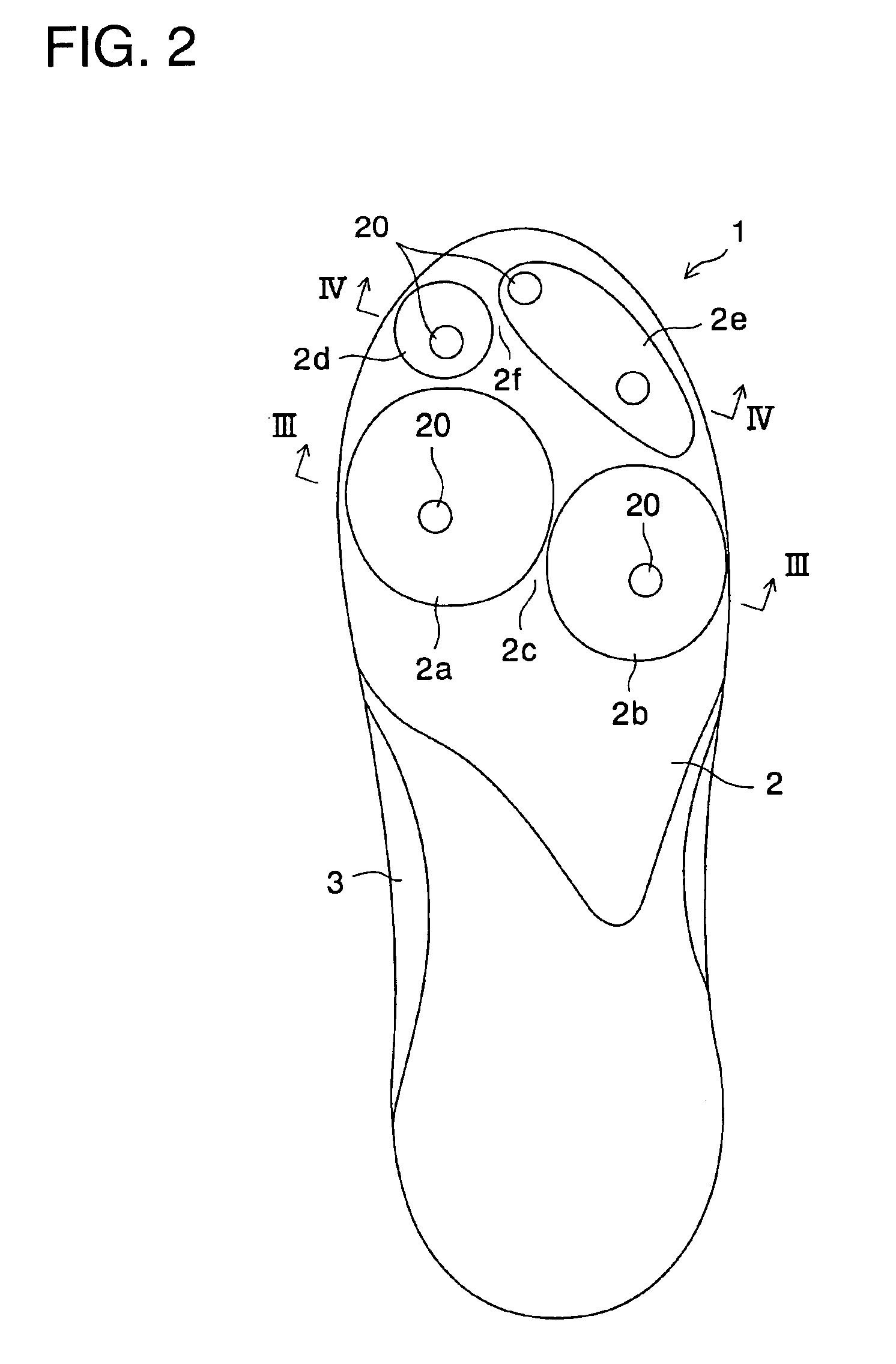Sole structure for a cleated shoe
a technology of cleated shoes and outsoles, which is applied in the field of cleated shoes, can solve the problems of decreased traction of shoes, slippage between, and the plantar surface of the forefoot portion of the foot cannot be closely contacted with the outsole, so as to improve the traction of shoes and enhance fittability
- Summary
- Abstract
- Description
- Claims
- Application Information
AI Technical Summary
Benefits of technology
Problems solved by technology
Method used
Image
Examples
Embodiment Construction
[0030]Referring now to the drawings, FIG. 2 shows a cleated track shoe 1 having an outsole 2 and an upper 3 attached on the outsole 2.
[0031]The outsole 2 is, as shown in FIG. 3, a thin plate member and may be formed of a hard synthetic resin. A plurality of cleats 20 are fitted on the bottom surface of the outsole 2. These cleats 20 may be formed of ceramic, metal, hard synthetic resin, or the like.
[0032]The forefoot portion of the outsole 2 is formed with a first bulge 2a and a second bulge 2b. Both of the bulges 2a, 2b protrude downwardly toward the ground surface, as shown in FIG. 3. Between the first and second bulges 2a, 2b may be formed a concavely curved portion 2c to smoothly connect these bulges 2a and 2b. Some of the cleats 20 are located on the convexly curved surfaces of the first and second bulges 2a, 2b. More preferably, one of the cleats 20 is located on a top centered position, i.e. the most protruded position, of a corresponding bulge 2a, 2b.
[0033]The forefoot port...
PUM
 Login to View More
Login to View More Abstract
Description
Claims
Application Information
 Login to View More
Login to View More - R&D
- Intellectual Property
- Life Sciences
- Materials
- Tech Scout
- Unparalleled Data Quality
- Higher Quality Content
- 60% Fewer Hallucinations
Browse by: Latest US Patents, China's latest patents, Technical Efficacy Thesaurus, Application Domain, Technology Topic, Popular Technical Reports.
© 2025 PatSnap. All rights reserved.Legal|Privacy policy|Modern Slavery Act Transparency Statement|Sitemap|About US| Contact US: help@patsnap.com



